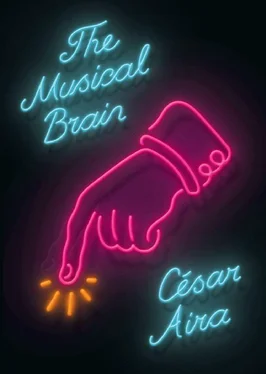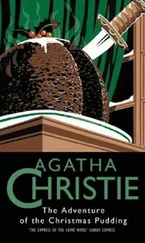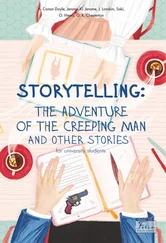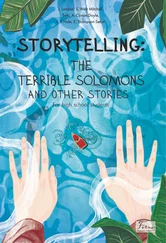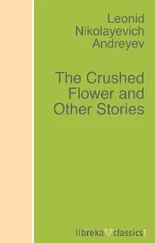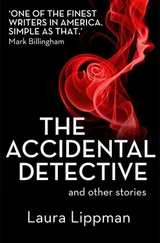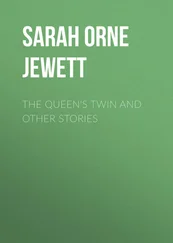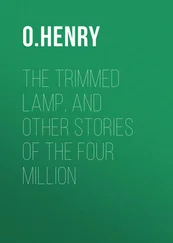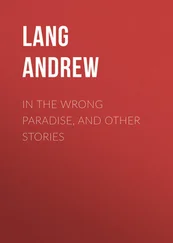César Aira - The Musical Brain - And Other Stories
Здесь есть возможность читать онлайн «César Aira - The Musical Brain - And Other Stories» весь текст электронной книги совершенно бесплатно (целиком полную версию без сокращений). В некоторых случаях можно слушать аудио, скачать через торрент в формате fb2 и присутствует краткое содержание. Год выпуска: 2015, Издательство: New Directions, Жанр: Современная проза, на английском языке. Описание произведения, (предисловие) а так же отзывы посетителей доступны на портале библиотеки ЛибКат.
- Название:The Musical Brain: And Other Stories
- Автор:
- Издательство:New Directions
- Жанр:
- Год:2015
- ISBN:нет данных
- Рейтинг книги:4 / 5. Голосов: 2
-
Избранное:Добавить в избранное
- Отзывы:
-
Ваша оценка:
- 80
- 1
- 2
- 3
- 4
- 5
The Musical Brain: And Other Stories: краткое содержание, описание и аннотация
Предлагаем к чтению аннотацию, описание, краткое содержание или предисловие (зависит от того, что написал сам автор книги «The Musical Brain: And Other Stories»). Если вы не нашли необходимую информацию о книге — напишите в комментариях, мы постараемся отыскать её.
The Musical Brain: And Other Stories — читать онлайн бесплатно полную книгу (весь текст) целиком
Ниже представлен текст книги, разбитый по страницам. Система сохранения места последней прочитанной страницы, позволяет с удобством читать онлайн бесплатно книгу «The Musical Brain: And Other Stories», без необходимости каждый раз заново искать на чём Вы остановились. Поставьте закладку, и сможете в любой момент перейти на страницу, на которой закончили чтение.
Интервал:
Закладка:
MARCH 16, 2008
In the Café
A CUTE LITTLE THREE- OR four-year-old girl was running around among the tables, laughing, playing on her own, hiding from her mother, who was chatting with a friend, and responding to the greetings of the customers by smiling and dashing off again. An old couple called her over; she went, and the man presented her with a little boat that he had made by folding a paper napkin. She ran to show it to her mother, who admired it and asked her if she had said thank you to the nice man. The girl ran back to do that, and played with the boat, which was very flimsy because of the fineness of the paper and soon came apart in her hands. But by then another man, sitting alone at another table (he was reading the soccer pages of Clarín ) had called her over and given her a little plane, also made from a paper napkin. As before, the girl ran to show it to her mother, and then she ran to show it to the man who had given her the boat, and her trills of pleasure made faces at other tables turn and smile. A child requires so little to be happy. So little, and yet, at the same time, so much, because the little thing that fills the child with innocent happiness lasts no longer than a sigh and then must be replaced by another. Sensing this, perhaps, a third customer, with eyes half closed and a look of intense concentration, had begun to fold a napkin. He was an older man, really old, in fact, and he must have been concentrating in an effort to remember; no doubt he’d done this for his grandchildren many years before, but not for his great-grandchildren, whose preference for electronic games had disheartened him. Now, in the café, where he came to kill time, he could reuse that modest skill, acquired so many years ago, to make another child happy; an unexpected opportunity, handed to him on a platter, to employ a metaphor in keeping with the scene. For a moment he feared that it had been too long, that forgetfulness had triumphed, as it had already in so many parts of his brain, disconnected by old age. And then there was the growing stiffness of his hands, the loss of coordination in his fingers, whose poor aching bones were inelegantly twisted out of line. But memory stubbornly threaded its way through the ruins of old age, and the man saw a little doll of fine, almost transparent paper appear shakily before him, trembling in its elementary disjointedness. The girl didn’t mind; she was happy just to receive the gift, to which she’d been drawn as if by a special sense. The paper figure, a silhouette with a tutu, made only by folding, without a single cut, was supposed to have joints in the arms and the legs, but because of imperfections resulting from the man’s memory lapses and alterations, and from the inadequate, ultra-fine paper, it came out like a limp puppet. Even so, the little girl recognized the shape and, with a spontaneous gesture that drew smiles from the customers all around the café who were observing this scene, cradled it in her arms, singing “Rock-a-Bye Baby,” and carried it to where her mother was sitting with her friend. A sweet sensation flooded through the old man, but the success of his creation must have been regarded as suspect, partly because its crude sexism was demagogic and facile (a doll for a girl, a ball for a boy), partly because that tattered scrap of paper paid scant honor to the venerable art of figurative origami. The response was already being prepared at a table occupied by a middle-aged man and a young couple. The difference in age wasn’t great enough for him to be their father; he looked more like a teacher with his students, or a boss with two young employees. Their table was covered with papers, which could have been pages of notes, lists, dispatch slips, bills, or computer printouts, but now they were focused on the fine paper napkin to which the young man was applying himself, under the gaze of the girl and the older man, who was commenting abundantly, gesturing to stress an authority based on age rather than skill, because it was clear that the boy was the one with the know-how. In his hands the rectangle of paper, folded and unfolded over and over, became a hen, with a plump, maternal body, a crescent of triangular tail feathers, a raised head and an open beak. A cheerful cock-a-doodle-doo from the hen’s creator attracted the little girl, who in turn attracted the wandering attention of the customers, curious to discover the new offering, which could have been anything, given the wide range of possibilities afforded by the material. The need to renew this improvised amusement was urgent because the little doll was already lying on the floor. The fate of the previous creation foreshadowed, of course, what was to come; and, if only at a speculative level, the question arose as to whether it might have been a waste of effort. But even without an explicit reminder that “Nothing is lost, all is transformed,” the atmosphere was suddenly charged with gain, not loss. The little girl’s rapid consumption of novelties was accepted as something natural, even exciting. This is how it should always be, some people were thinking, philosophically: getting and losing, enjoying and letting go. Everything passes, and that’s why we’re here. Eternity and its more or less convincing simulacra are not a part of life. The girl, who was life and nothing but, was delighted by the hen, which served as a pretext to dash off again, holding it up as if to make the bird fly, although, because of her unsteady, beginner’s steps — she was perpetually about to fall, perpetually recovering her balance — it flapped more like a butterfly. She clearly wasn’t bothered by the fact that hens don’t fly, or at least not like that. In the simple zoology of children, one animal shape covers a range of species, geographies, and epochs, and can even encompass night and day, since the little flying hen was also flying like a bat and, given the inherent ambiguity of all chunky forms, might in this case have been taken for one, except that a bat would have been completely out of place in the hands of candor incarnate. And speaking of candor, the color of the paper napkins conspired against that interpretation too: their white was irreversible. In any case, all that flying and the erratic pressure of the child’s little pink fingers proved to be utterly destructive: the hen’s round body became a pyramid in ruins, the proud triangles of the tail were soon all askew, and by the time the junior test pilot remembered to show it to her mother (a ceremony to which she seemed to attribute the gravity of a certification), it was already in tatters. But obviously no one minded, and they wanted to go on indulging her. Two girls who were having a lively conversation and had not appeared, up till then, to be paying attention to what was going on, waved something white, which, like a red rag to a bull, brought the interested party rushing over: it was a clown made by ingeniously folding a small paper napkin. Presumably, then, they had been inattentive to the girl’s forays because they were attending to the little work in progress. And it was a remarkable work, superior in quality to what had been produced so far: the clown had a round hat, a disproportionate protuberance to represent his rubber nose in the middle of the paper circle that was his face, a tail coat, baggy pants and the classic shoes that reach all the way to next door. To judge from appearances, neither the girl who was now handing the clown to its eager recipient nor her companion would have seemed capable of such an exploit: they looked like airheads, good for nothing but idle chatter (which is what they had seemed to be engaged in, at least for those out of earshot). The only explanation that bridged the gap was that they were kindergarten teachers, or one of them was, and her training must have included an obligatory or optional unit on making paper figures. A clown! Every child’s best friend, who keeps his little charges company even when they close their eyes, tucked into bed, and never forsakes them, not even in their worst nightmares; on the contrary, that’s where he takes the lead role, in order to prevent others — monsters, for example — from stepping in. This inoffensive little clown, made of paper so fragile a gaze could tear it, had been marked somehow by his contact with monsters in the world of dreams. But how? The trace was perceived subliminally, and in no other way, because the continual movements of the clown’s possessor — her dashes and sudden displays — prevented any detailed observation. It was, in fact, a stain: the paper clown’s white was not immaculate like that of the earlier figures. Not a very noticeable stain, just a dirty brown smudge, of indeterminate shape, which, because of the folding, appeared on various separate parts of the body. Coffee, from the lips of one of the girls. So they must have folded a used napkin. That was strange. Given a choice, why pick faulty materials for a delicate and difficult piece of work? Maybe they had started folding just to see (could it be done with this sort of paper and a sheet of this size?), using the first napkin that came to hand, and by the time they realized it was possible, the work was so far advanced that it wasn’t worth getting a new napkin and starting all over again. If they really were kindergarten teachers, as it seemed from the general impression they gave — the loud voices, the dyed hair, the spontaneity — satisfying childish desires with whatever came to hand was what they did every day. Now might be the moment to say a few words about the napkins that were being used to make these gifts for the little girl. A well-stocked napkin dispenser sits on every café table in Buenos Aires. The classic rectangular, elongated napkins in the equally classic metal dispenser with a spring to push them up have gradually been replaced by square napkins, made of slightly tougher paper, on which the name, logo, and address of the café are printed. (There are triangular ones too, but they are less common.) And the new dispensers are plastic or wooden stands of one sort or another. The café in which the events recounted here took place had not been modernized in this regard: they were still using the old metal dispensers with their elongated napkins, folded twice, resting on a metal plate pushed up from underneath by a spring: a system that had disappeared, at that point in the city’s history, from all but the lowliest establishments. It was an anomaly, all the more striking since the café had recently been renovated in a way that aspired to elegance and modernity. Either the owners had a large number of old dispensers in good condition and had decided to avoid the cost of buying new ones, or, more likely, this was simply a detail that they had overlooked. These possibilities were not mutually exclusive, and they were complemented, not excluded, by a third, which actually included them: perhaps the owners regarded the old dispensers as superior, not only from a practical point of view, but also because of that vague, unconscious fondness that we have for objects we have lived with for a long time, or all our lives. The refurbishing of the old cafés, which had to be done in order to attract a new generation of customers and compete with the new cafés, contributed to the ceaseless transformation of the city and the consequent obliteration of memories. Preserving something in the midst of change was a reflex to ensure survival or continuity, operating on a tiny detail that would then irradiate the whole. But in this case there was something more: this large, renovated café was situated on an invisible urban frontier: to one side lay the local shops and businesses; to the other, near the movie theaters, a space traversed by workers and domestic staff, who lived in the poor suburbs to the west, coming from or going to the Flores railway station, just two hundred yards away. The old napkin dispensers linked not only the present and the past but also the coexisting social strata, which were not mutually exclusive either, since poverty was a thing of the past. In any case, the division of a city’s population into socioeconomic classes is a crude simplification because every person belongs to a stratum of his or her own: there are as many strata as individuals. One such individual, a man of impressive sartorial elegance, who looked like an executive, was sitting at a table on which he had opened business files, and was making marks and notes on the pages with a stylish pen; his cell phone was lying among the papers, and his briefcase was open on the chair beside him. He must have been getting ready for an important meeting, absorbed in his figures and arguments, but not entirely, to judge from what happened next. Absently, without looking, he plucked a napkin from the metal box. The way he did it spoke of a long familiarity with the apparatus (with a neat flick of his thumb and index finger he extracted the napkin without creasing it at all) and hence of a life spent in cafés; perhaps he had once been a sales rep, selling pharmaceuticals or some other product, stopping at a café halfway through his daily round to take the weight off his feet and catch up with his paperwork. If so, he had progressed through the ranks, but as always — this is how progress works, fundamentally — he still retained the habits of the world that he had left behind. He had put down his pen and stopped reading his documents, and in the few seconds it took the girl to destroy the little clown inadvertently, his clever folding produced the next gift. It was — surprise! — a coffee cup with its saucer. This was a qualitative leap with respect to all the previous folded offerings, and since there had already been one such leap in the series, it was a leap with respect to a leap. The cup was simply perfect in its Bauhaus simplicity, and its curves, produced without breaking the basic rule of creating shapes solely by means of folding and unfolding, were a tour de force. So was the way it was all in one piece, although the real thing was made up of two: the cup and the saucer, indissolubly united in this case by the paper. The little girl, who still hadn’t learned to be shy, came over happily, without needing to be called, to accept this new tribute to her grace and beauty. Another votive offering to her innocence. She took it in her clumsy little hands and, laughing triumphantly, ran to show it to her mother, except that this time she stopped at each table along the way and reached up on tiptoe to place it next to a real coffee cup where possible, so that everyone could see the resemblance. Many of the customers — all of them, no doubt — would have been able to appreciate the full worth and difficulty of that work, but she took it for granted; it was as natural to her as a flower or a stone, something a nice man had given her as a token of admiration; there was no need for her to admire it. By the time she reached her mother, the cup was already halfway back to being a napkin again. Her mother, still chatting, spared her the briefest mechanical glance. After the first little figure, the first of what was beginning to look like an infinite series, she had immediately switched off, as adults do when their children are playing. Nobody loses out, because, from that moment on, the children enter a dimension of their own, composed of repetitions and intensities. Something like that had happened in the café. The girl had achieved a kind of invisibility, in which she was moving like a fish in water. The life of the café continued as normal. The waiters — there were six of them, each attending to his own group of tables — circulated with their trays, took orders, served, and collected money. The customers came and went, greeted one another, took their leave; those arriving late apologized and blamed the traffic. And even those who had made the ritual folded-napkin offering switched off after that and got on with their own lives. But the series, if that’s what it really was, did not come to a halt; it was as if the flow of ordinary time were yielding to the peremptory nature of childhood. A lady with dyed-red hair, who was drinking tea, wearing a violet and yellow tracksuit, caught the girl’s eye with a smile and presented her with what she had constructed from a little paper napkin. This new creation was a masterful, prize-worthy piece of work, which took the very concept of the qualitative leap to a whole new level. It was a bunch of flowers, a profusion of tiny roses, arum lilies, gladioli, daisies, and carnations, crowned by a chrysanthemum, and filled out with ferns. All this had sprung from half a dozen folds in the miserable little napkin, and expert unfolding to fluff it into shape. All the flowers, with their almost microscopic details, were recognizable. The only thing they lacked was color; the white of the paper made them ghostly. The qualitative leap wasn’t necessary in itself, since the only thing that mattered from the girl’s point of view was the continuation of the game, regardless of crescendos or decrescendos, but the leap’s own necessities favored subtle forms; as a result, one had to look at this bouquet twice, or three times, to make out the flowers, otherwise it might have been mistaken for a ball of crumpled paper. This escalation was inevitable; other kinds of gift-objects — birthday or wedding presents, offerings made to a bountiful god — could also evolve toward ever-greater subtlety and ultimately assume the appearance of trinkets, or of nothing at all. When that happens, people say, with a condescending smile: “It’s the intention that counts.” But it’s true: the intention counts so much it disappears into the gift, just as a smaller number, 843, say, disappears into a bigger one like 1,000 and, lying hidden there, is extremely hard to find, as hard as winning the lottery. Brandishing the bouquet of paper flowers, the girl set off, spinning like a bee, as if she were sending a coded message to all the little girls in the world, indicating the direction of the garden. Her handling accentuated the ephemeral nature of flowers: before she had finished transmitting her message, the delicate posy, bouncing crazily as she leaped about, had totally lost its shape. If anyone regretted the rapid destruction of these fugitive playthings, it certainly wasn’t her. She was riding the succession of novelties, which, in turn, because they were novelties, were riding on time, which was emitting speed and unpredictability, like sparks streaming off in two different directions. The late bouquet lay on the floor, where countless shoes would step on it, while, with her winning smile, the girl laid claim to what was already coming her way from a table occupied by four men, not all that young but “still young” all the same, rock fans or bikers, one of whom had folded and refolded a paper napkin (who knows where and how he’d learned to do this) to make a quivering replica of the Guggenheim Museum in Bilbao, with all its bold intersecting planes, every single one. Trills and laughter from the recipient, the squealing of a happy little creature: she was delighted, although she had no idea what it represented — but that might have been, and no doubt it was, precisely what delighted her. Children have a very special attachment to the incomprehensible; there’s so much they don’t understand at that age, they have no choice but to love it, blindly, like an enigma, but also like a world. It teaches them what love is. It traces out the vacant shape of their lives, heralding the marvelous variety of forms. Incomprehensible objects are keys to the word incomprehensible , and that’s why children are so fond of the word, which holds the promise of an object to be opened and entered into. They live, provisionally, in that correspondence. With the imaginative flexibility particular to her age, the girl entered the museum and walked through its rooms, among the works of contemporary art, those supremely strange works that, for the uninitiated, belong to the realm of the incomprehensible. Arbitrary objects and excessive complications reversed themselves for the benefit of innocence. But the almost transparent paper of the napkin from which the museum was made was so flimsy, and the tensions that held it all in place were so delicately balanced that it was already coming apart under the clumsy pressure of the girl’s little fingers, and the renowned curved surfaces were flexing with a pliability that no architect, least of all Frank Gehry, would have been able to foresee. Folding, enfolding, and unfolding were all gathered into the abstraction of a geometrical point. And at that point a question arose spontaneously: how could it be that the set of customers who happened to have come to one of the multitudinous cafés scattered around the city at that hour of the afternoon included so many people who had so thoroughly mastered the art of paper folding? Was it an almost miraculous coincidence? A gratuitous conspiracy? A moment’s inspiration? But folding paper into recognizable shapes is not a skill that requires long study, or travel to the Far East for classes with a master. It would have been more surprising to find that among the customers sitting in a café at a certain time, there were twenty podiatrists or sociolinguists, sitting on their own or in pairs or little groups at each table, who didn’t know each other and had come to the café at that time for twenty different reasons— that would have been truly jaw-dropping. Up to a point, figurative paper-folding is a natural and spontaneous activity, but only up to a point: the starting point, that is, the making of little boats or planes. And yet, because of the natural tendency to elaborate and the spare time that, in retrospect, we generally turn out to have had, in this case the idle pastime had given rise to escalating transformations. And that was precisely where the solution began to emerge. The question at issue could not, in fact, be answered by comparing or juxtaposing paper-folding with other activities, or considering fortuitous groupings of things or people. The answer lay in the reason for the activity of folding, which was originally to fold the spatiotemporal coordinates in which coincidences occurred. These coincidences gave rise to many misunderstandings and arguments, which were never resolved. Were they coincidences or were they reality? Here, two incompatible modes of thought — statistical and historical — entered into conflict. Representative figures made by folding paper must have first appeared when someone discovered that a sheet of paper cannot, however hard one tries, be folded in half more than nine times, no matter how large or thin the sheet is. Faced with this limit, what had been simply a piece of folded paper flowered into something that resembled a piece of the world. The work of folding, in other words, bounced off the wall of the incomprehensible and opened into the figurative. The discovery of the ninefold limit had taken place in the legendary time of origins. The Dawn of Humanity, it must have been, since the limit was a mathematical absolute. But it turned out that paper had been invented at a relatively late stage in History, before which it was already impossible to fold a sheet of paper more than nine times, although there was no paper. What this meant for Humanity was that the ingenious and amusing figures achieved by folding were, as they say, “within everyone’s reach.” Doubt once dispelled, the series continued and soared away from the simple and the clichéd. And so it was that the next gift, which the little girl received from a short man with an impressive quiff of black hair combed back and held in place with brilliantine, who was eating a sandwich and drinking a beer, realized the possibilities of a little paper napkin in the most elaborate way. It was a boat, not a schematic representation like the first gift, but an elegant sailing ship decked with flags, and the folding continued out from the keel to show the wavy water of a river and the banks on either side, and houses on the banks, and stores, a church, gardens, and people crowding the streets along the waterfront, waving to the passing ship. On board, the crew was busy working the sails, while the passengers admired the view and waved back to the locals. The group of passengers, who were obviously important people, in eighteenth-century attire (wigs, ermine stoles, braid), was dominated by the majestic, rotund figure of a queen, disproportionately large and clearly in command. Standing slightly apart from the group, and just as prominent as the queen, was a handsome, prepossessing man in full military regalia, with a plumed hat, a fur cape, and a sword hanging from his belt. An almost microscopic fold of the tortured napkin used to construct this panorama showed that he had only one eye. That detail was enough to identify him and situate the scene, for this was, in fact, the depiction of a very particular historical event. In 1786, Potemkin, Prince of Tauris, favorite of Catherine the Great, completed the conquest and pacification of the Crimea, and in the spring of the following year, he arranged for the sovereign to visit the peninsula, as well as Ukraine, which had also been annexed to her empire. She traveled in grand style, with all the court and the diplomatic corps, and hundreds of servants, cooks, musicians, and actors, plus a portable theater and salons, libraries, and pets. Each stage of the journey was celebrated with magnificent parties held at castles along the way, attended by the local aristocrats and dignitaries. Coaches, berlins, carts, and sleds were left in Kiev, and the voyage continued over the water: eighty luxuriously fitted-out ships set off on the Dnieper, and this was the moment that had been captured by the napkin: the tsarina in the flagship, surrounded by the ambassadors of all the European powers, and Potemkin at the prow, making sure that the grand spectacle that he had orchestrated was going according to plan. (He had lost an eye in a brawl with the brothers Ostrov, who were also among Catherine’s lovers.) It was all his creation: the prosperous cities they could see on the riverbanks, thrown up overnight to be displayed to the visitors; the plump, multitudinous cattle, brought in specially; the contented peasants cheering the tsarina, in reality a corps of carefully instructed extras. In the diplomatic reports that were later sent to various courts, it was clear that none of the ambassadors were entirely convinced by this playacting, but all admired the industry of the favorite who, in a few short months, had mocked up an entire country from scratch. The leap from the legendary tsarina to the delightful little girl had traversed every kind of representation. The minuscule diorama, treated with a regal indifference, began to unfold as soon as she touched it, and by the time she reached her mother’s table, after making all manner of unnecessary detours and digressions with her new treasure on display, the destruction was almost complete: the queen was sinking into the waves of the river; the courtiers and ambassadors were collapsing onto each other in an involuntary orgy; Potemkin was on top of a church tower, standing on his head; and the ship looked like a bicycle. The ruin, reverting to the condition of a crumpled napkin, sank in a puddle of Coca-Cola, and the little girl ran to the other end of the café. A bespectacled youth had set aside his laptop for a moment to join in the folding game, and was offering her a paper version of Rodin’s Thinker (if the almost impalpable material of the cheap napkins in those metal dispensers can be dignified with the name of paper). She greeted it with her indiscriminate trilling and laughter, although, for a child of her age, it was hardly an appropriate toy. It was probably the only thing that the youth had learned how to make by folding paper. Or perhaps he had once made other things, but this was the one that had turned out best, and from then on he had specialized. Or perhaps, as his use of a computer suggested, he was committed to going paperless and saving the planet’s forests. If he’d made an exception in this case, it was because he wanted to take part in the competition along with all the others and not be left behind; to insist on saving a tiny napkin made of the lightest paper would clearly have been a symptom of the fanatical rigidity that discredits a good cause. But there was something else, which had to do, precisely, with The Thinker . The only paper-saving that made sense was the kind that depended on mental work, on concentration (so finely represented by Rodin’s masterpiece), which enabled a thinker to skip the intermediate steps, and thus avoid the need to waste reams of paper on those rough drafts, the works of the philosophers. The girl was a stranger to philosophies and concentration, and all she could recognize was a human figure, which she cradled in her arms, singing a simplified lullaby. The customers smiled as she went past their tables, and there was perhaps — or almost certainly — an element of vindictive pleasure in the smiles of those who had inwardly condemned the gift as inappropriate, a form of cultural showing-off quite out of place in that context. The next object the little girl received (folded by a priest in a break from his conversation with two contractors about an extension to the parish soup kitchen) seemed to have been intended to contrast with the incongruous Thinker . It did this by signaling its origins in infantile zoology and storybook illustration, and its resemblance to a toy with moving parts. Using only the obligatory material (the little paper napkin), the priest, by means of ten cunning folds, had made a kangaroo. A mother kangaroo, with a joey’s head emerging from the ventral fold. Before handing it over, he gave the girl instructions, or just the one, which was very simple and required no words since it took the form of a practical demonstration: by pulling on the kangaroo’s long, curved tail, he made the joey’s head pop out of the pouch and pop back in again. It can’t have been the first time the priest’s white hand had tugged on a kangaroo’s tail. The little girl was charmed by the joey’s shy peeping, and ran off at once to show it to her mother. The priestly origin of this ingenious folding was lost along the way, as the fragile mechanism was destroyed by the girl’s clumsy jerks. But didn’t this gift allude to the higher Maternity and the Child who appeared and disappeared at the miraculous edges of the world? That priest had practiced with communion wafers, so similar to the napkins in their texture and fineness. No one really knows what a wafer looks like before the ceremony in which it plays the leading role. The origins of the host are surrounded by a multitude of legends. For example, the legend of the tenth fold. There was no time to repair the tail-lever because the girl’s mother was already standing up, along with her friend, and looking around, not realizing at first that her daughter was right there beside her, then taking her by the hand to go. Suddenly she was in a big rush: there’d been so much to say, they’d talked so long; time had flown, and the hairdresser was about to close. At the last minute the little girl let go of her mother’s hand and ran a few steps to take something that was being held out to her. Her mother called her impatiently, holding the door open, and it was only when they were out on the sidewalk that she saw what her daughter was holding: a polyhedron made by folding a little paper napkin.
Читать дальшеИнтервал:
Закладка:
Похожие книги на «The Musical Brain: And Other Stories»
Представляем Вашему вниманию похожие книги на «The Musical Brain: And Other Stories» списком для выбора. Мы отобрали схожую по названию и смыслу литературу в надежде предоставить читателям больше вариантов отыскать новые, интересные, ещё непрочитанные произведения.
Обсуждение, отзывы о книге «The Musical Brain: And Other Stories» и просто собственные мнения читателей. Оставьте ваши комментарии, напишите, что Вы думаете о произведении, его смысле или главных героях. Укажите что конкретно понравилось, а что нет, и почему Вы так считаете.
